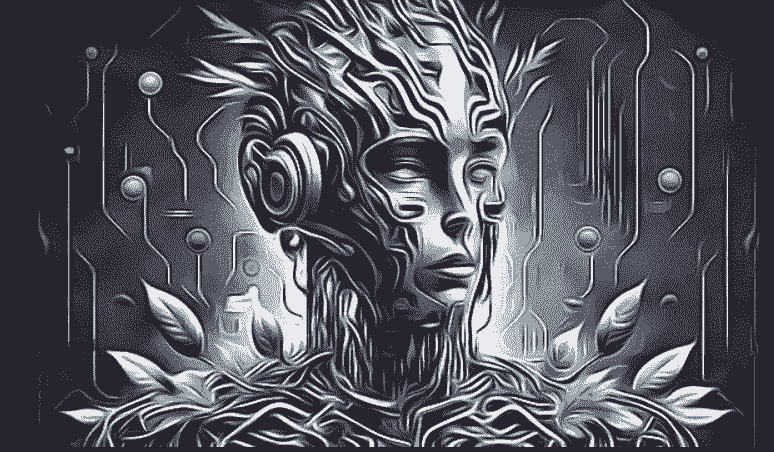K-Means Algorithm:
Explanation:
K-Means is a popular clustering algorithm used for partitioning a dataset into a set of K distinct, non-overlapping clusters. The algorithm aims to minimize the within-cluster variance, meaning it tries to make the data points within each cluster as similar to each other as possible.
- Initialization: Randomly select K points from the dataset as the initial cluster centroids.
- Assignment: Assign each data point to the nearest centroid, forming K clusters.
- Update Centroids: Recalculate the centroid of each cluster by taking the mean of all data points assigned to that cluster.
- Repeat: Iteratively repeat the assignment and centroid update steps until convergence, i.e., when the centroids no longer change significantly or a maximum number of iterations is reached.
Example:
Suppose we have a dataset of points representing the locations of customers in a city. We want to segment these customers into clusters based on their proximity for targeted marketing. Here’s how K-Means might work:
- Initialization: Randomly select K initial centroids.
- Assignment: Assign each customer to the nearest centroid (cluster).
- Update Centroids: Recalculate the centroid of each cluster based on the current assignments.
- Repeat: Iterate the assignment and centroid update steps until convergence.
After convergence, we’ll have K clusters representing different groups of customers based on their geographic proximity.
Example: K-Means Clustering
from sklearn.cluster import KMeans
import numpy as np
# Generate some example data
X = np.array([[1, 2], [1.5, 1.8], [5, 8],
[8, 8], [1, 0.6], [9, 11]])
# Initialize K-Means with 2 clusters
kmeans = KMeans(n_clusters=2)
# Fit the K-Means model to the data
kmeans.fit(X)
# Get the cluster centroids
centroids = kmeans.cluster_centers_
print("Cluster centroids:", centroids)
# Get the cluster assignments for each data point
labels = kmeans.labels_
print("Cluster labels:", labels)
DBSCAN Algorithm:
Explanation:
DBSCAN (Density-Based Spatial Clustering of Applications with Noise) is a density-based clustering algorithm that groups together closely packed points in a dataset. It’s particularly useful for datasets with irregular shapes and noise.
- Core Points and Density Reachability: DBSCAN defines two key concepts:
- Core Points: A point is considered a core point if it has at least a specified number of points (MinPts) within a specified radius (Eps) around it.
- Density Reachability: A point is density-reachable from another point if there is a chain of core points connecting them, such that each consecutive point is within Eps distance of the previous one.
- Cluster Formation: DBSCAN identifies clusters by visiting each point in the dataset and recursively expanding clusters from core points. Points that are not core points or reachable from core points are classified as noise or outliers.
Example:
Consider a dataset of points representing the locations of weather stations. Some stations are densely packed in urban areas, while others are sparsely distributed in rural regions. Here’s how DBSCAN might work:
- Core Points and Density Reachability: Define core points based on MinPts and Eps parameters. Points with a minimum number of neighbors within a specified radius are considered core points.
- Cluster Formation: Start with an arbitrary point and expand the cluster by adding neighboring points that are density-reachable. Repeat this process until all core points have been visited and clustered. Points that remain unvisited are considered noise.
After clustering, we’ll have groups of weather stations representing densely populated urban areas and isolated rural stations, with noisy outliers potentially representing stations in unusual locations.
Example: DBSCAN Clustering
from sklearn.cluster import DBSCAN
import numpy as np
# Generate some example data
X = np.array([[1, 2], [1.5, 1.8], [5, 8],
[8, 8], [1, 0.6], [9, 11]])
# Initialize DBSCAN with epsilon=2 and min_samples=2
dbscan = DBSCAN(eps=2, min_samples=2)
# Fit the DBSCAN model to the data
dbscan.fit(X)
# Get the cluster labels for each data point
labels = dbscan.labels_
print("Cluster labels:", labels)Implementation of customer segmentation, anomaly detection, and recommendation systems using K-Means and DBSCAN algorithms in Python.
Customer Segmentation using K-Means:
from sklearn.cluster import KMeans
import pandas as pd
import numpy as np
# Generate example customer data
data = {
'CustomerID': [1, 2, 3, 4, 5],
'Age': [25, 35, 45, 55, 65],
'Income': [50000, 60000, 70000, 80000, 90000]
}
df = pd.DataFrame(data)
# Select features for clustering
X = df[['Age', 'Income']]
# Initialize K-Means with 3 clusters
kmeans = KMeans(n_clusters=3)
# Fit the K-Means model to the data
kmeans.fit(X)
# Get the cluster labels for each customer
df['Cluster'] = kmeans.labels_
print(df)This code performs customer segmentation based on their age and income into three clusters using K-Means algorithm.
Anomaly Detection using DBSCAN:
from sklearn.cluster import DBSCAN
import pandas as pd
# Generate example data with anomalies
data = {
'Value': [10, 20, 15, 30, 200, 25, 35, 250]
}
df = pd.DataFrame(data)
# Initialize DBSCAN with epsilon=10 and min_samples=2
dbscan = DBSCAN(eps=10, min_samples=2)
# Fit the DBSCAN model to the data
dbscan.fit(df)
# Get the cluster labels for each data point
df['Anomaly'] = dbscan.labels_
print(df)This code detects anomalies in a dataset using DBSCAN algorithm. In this example, data points with values significantly different from others are considered anomalies.
Recommendation System using K-Means:
from sklearn.cluster import KMeans
import pandas as pd
# Generate example user-item interaction data
data = {
'User': ['User1', 'User2', 'User3', 'User4', 'User5'],
'Item1': [1, 0, 1, 0, 1],
'Item2': [0, 1, 1, 0, 1],
'Item3': [1, 0, 0, 1, 0]
}
df = pd.DataFrame(data)
# Select features for clustering (item interactions)
X = df.drop('User', axis=1)
# Initialize K-Means with 2 clusters
kmeans = KMeans(n_clusters=2)
# Fit the K-Means model to the data
kmeans.fit(X)
# Get the cluster labels for each user
df['Cluster'] = kmeans.labels_
print(df)This code implements a simple recommendation system using K-Means algorithm. It clusters users based on their interactions with items, which can be used to recommend similar items to users in the same cluster.
In the symphony of life, let your actions compose the melody of kindness, your words echo the harmony of empathy, and your thoughts resonate with the rhythm of gratitude
K
“Embrace the uncertainties of tomorrow with the wisdom gained from yesterday, for within the unknown lies the canvas of endless possibilities” – K
Amidst the hustle of adulthood, may we remember to dance freely with the innocence of our inner child, embracing curiosity, wonder, and boundless imagination
K


